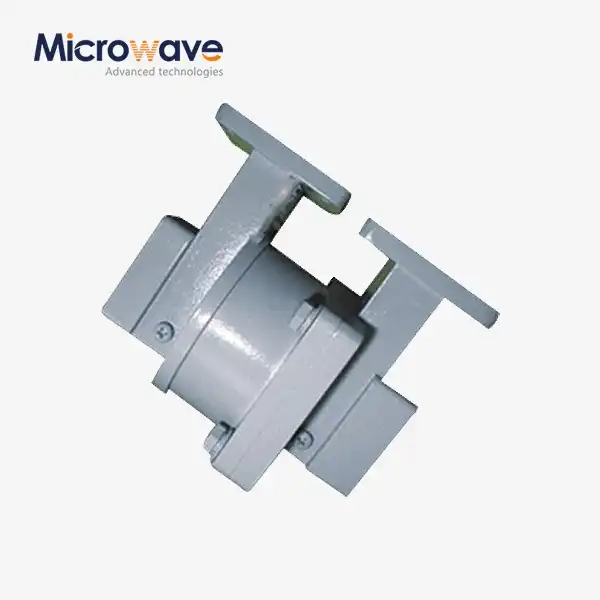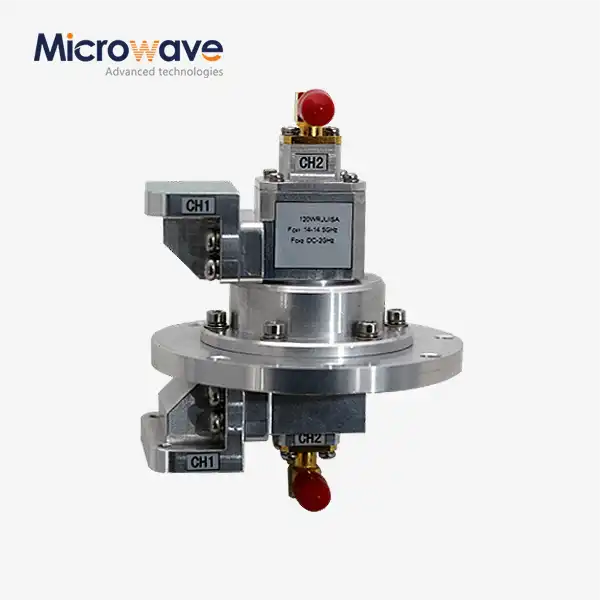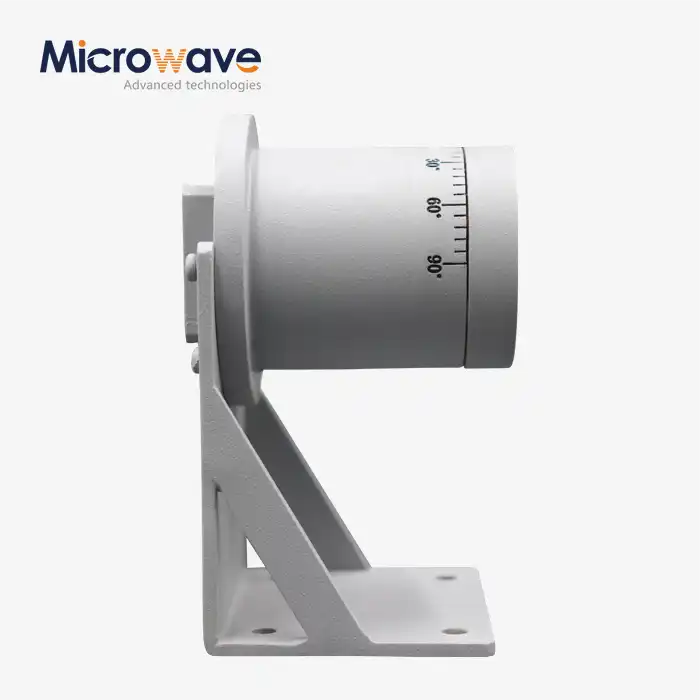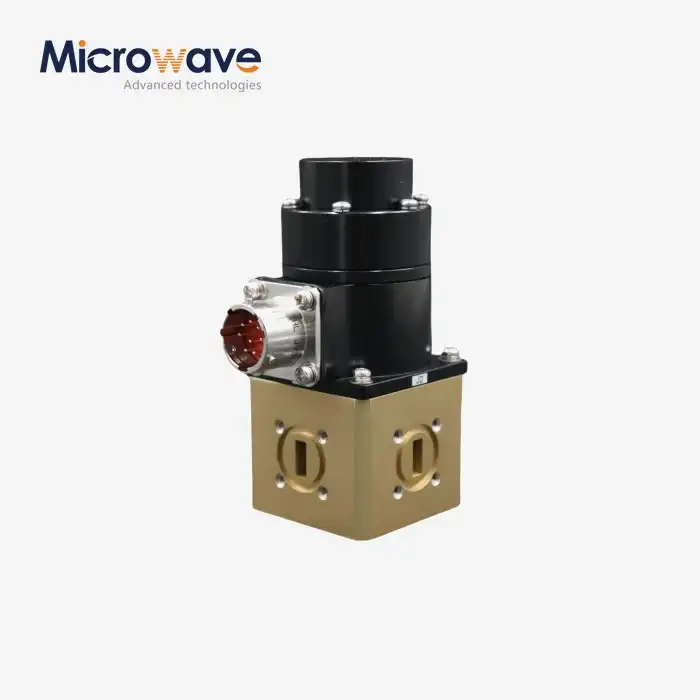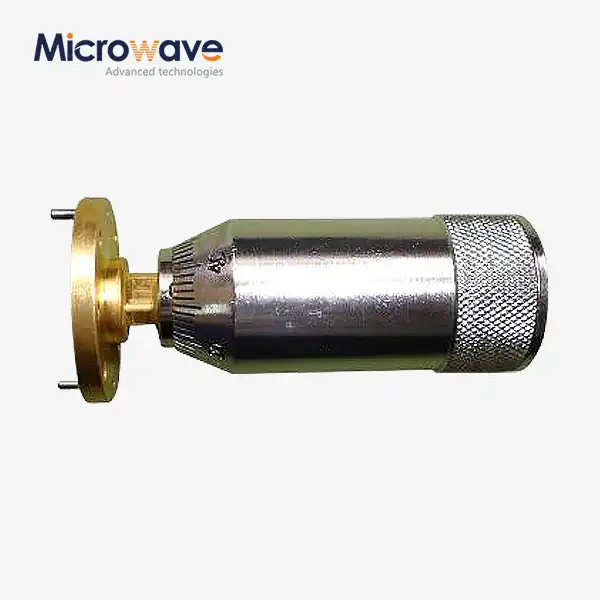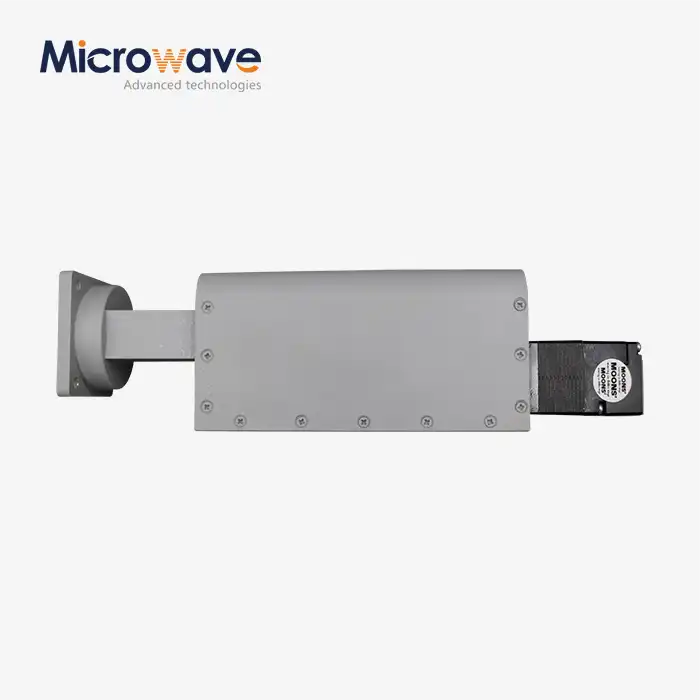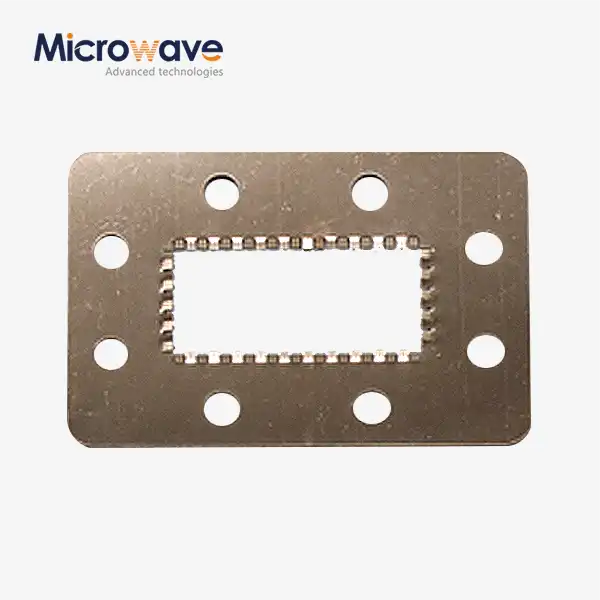What are the fundamental working principles of a Waveguide Single Channel Rotary Joint?
Waveguide Single Channel Rotary Joints represent a critical component in microwave transmission systems where rotational movement is required while maintaining signal integrity. These precision electromechanical devices function by enabling the seamless transfer of microwave energy between stationary and rotating waveguide sections without significant signal degradation. The fundamental working principle involves creating a carefully engineered cylindrical cavity at the junction where electromagnetic waves can propagate across the rotating interface while maintaining proper mode alignment, impedance matching, and minimal energy loss. Advanced Microwave Technologies' Waveguide Single Channel Rotary Joints are engineered with high-precision tolerances and specialized materials to ensure reliable operation across varying frequencies, power levels, and environmental conditions.
Core Engineering Principles Behind Waveguide Single Channel Rotary Joints
Electromagnetic Coupling Mechanisms
The primary electromagnetic coupling mechanism in a Waveguide Single Channel Rotary Joint involves maintaining field continuity across a rotational boundary. When electromagnetic waves propagate through a waveguide, they establish specific field patterns or modes that must be preserved during transmission across the rotating interface. The Waveguide Single Channel Rotary Joint achieves this through precise dimensional control of the coupling region, where the rotating and stationary sections meet. This critical junction features carefully machined conductive surfaces that allow electromagnetic fields to transition smoothly without mode conversion or significant energy reflection. Advanced Microwave Technologies' rotary joints employ proprietary techniques to ensure the coupling region maintains consistent electrical performance throughout the rotational range, with special attention to gap dimensions, surface finish, and concentricity. The coupling mechanism must accommodate the dominant propagation mode of the specific waveguide, which varies depending on the operational frequency band, requiring careful engineering to preserve the integrity of the electromagnetic field structure while allowing mechanical rotation.
Mechanical Design Considerations
The mechanical design of a Waveguide Single Channel Rotary Joint is equally crucial to its performance as its electrical characteristics. Precise bearing systems are incorporated to maintain perfect concentricity between rotating and stationary parts, as even minor misalignments can significantly degrade RF performance. Advanced Microwave Technologies employs high-precision bearings with minimal runout tolerances to ensure consistent electrical performance throughout the rotation cycle. The mechanical interface must also accommodate thermal expansion across the specified operating temperature range (-40°C to +85°C) without compromising electrical performance. The rotary joint's housing is typically constructed from lightweight, high-strength materials that provide mechanical rigidity while minimizing weight for aerospace and satellite applications. Specialized sealing systems protect the internal components from environmental contaminants, ensuring reliable performance in harsh conditions. The mechanical design also addresses torque requirements, as the joint must rotate freely while maintaining proper electrical contact between components. Different configurations (I-Type, L-Type, and U-Type) offered by Advanced Microwave Technologies present unique mechanical challenges that must be addressed through specialized design approaches to maintain optimal RF performance while accommodating various mounting requirements and space constraints.
RF Performance Optimization
RF performance optimization in Waveguide Single Channel Rotary Joints requires meticulous attention to numerous electrical parameters. Insertion loss, which measures the power reduction through the component, is minimized through careful material selection, precision manufacturing, and specialized surface treatments. Advanced Microwave Technologies achieves industry-leading insertion loss figures below 0.3 dB through advanced manufacturing techniques and quality control processes. VSWR (Voltage Standing Wave Ratio), a critical parameter indicating impedance matching quality, is optimized through careful dimensional control of the transition regions and coupling structures. Specialized RF impedance matching techniques are employed at critical junctions to minimize reflections and maximize power transfer efficiency. Phase stability during rotation represents another crucial performance aspect, particularly for radar and communication systems where consistent phase characteristics are essential. Advanced design elements minimize wow and flutter effects during rotation, ensuring stable phase performance regardless of rotational position. High-power handling capabilities are achieved through proper thermal management, specialized materials with excellent heat dissipation properties, and careful attention to potential arc-over points in the design. The rotary joints undergo extensive testing across their operational frequency ranges to verify performance meets stringent specifications before deployment in critical applications.

Types and Configuration Options of Waveguide Single Channel Rotary Joints
I-Type Configuration and Applications
The I-Type Waveguide Single Channel Rotary Joint features a design where both linear arms are aligned with the axis of rotation, creating a straight-through transmission path. This configuration is particularly advantageous in systems with limited space along the rotation axis and where direct in-line signal transmission is required. The I-Type design minimizes the number of internal transitions, resulting in superior RF performance with minimal insertion loss and excellent VSWR characteristics. Advanced Microwave Technologies' I-Type Waveguide Single Channel Rotary Joints are commonly employed in satellite communication systems where the antenna feed must rotate continuously while maintaining connection to fixed waveguide sections. The design excels in high-frequency applications up to 40 GHz, making it ideal for advanced radar systems requiring precise performance characteristics. The mechanical simplicity of the I-Type configuration contributes to enhanced reliability and reduced maintenance requirements, with specialized bearing systems ensuring smooth operation over extended operational lifetimes. This configuration is particularly well-suited for applications requiring continuous rotation, as it minimizes mechanical stress on the RF components during operation. Advanced Microwave Technologies offers customization options for I-Type joints, including specialized flange connections, pressure windows, and enhanced environmental sealing for deployment in challenging operational environments.
L-Type Configuration and Applications
The L-Type Waveguide Single Channel Rotary Joint incorporates a design where one arm is perpendicular to the axis of rotation, creating a 90-degree transition within the component. This configuration is particularly valuable in systems where space constraints or mechanical layout requirements necessitate a right-angle signal path. Advanced Microwave Technologies' L-Type rotary joints employ specialized internal transitions and carefully engineered mode conversion techniques to maintain excellent RF performance despite the complex signal path. The L-Type configuration offers significant advantages in radar systems and satellite communication equipment where antenna mounting constraints dictate perpendicular waveguide routing. The design incorporates specialized impedance matching structures at the 90-degree transition to minimize reflections and maintain consistent performance across the operational frequency band. These rotary joints can handle significant power levels while maintaining low insertion loss and excellent VSWR characteristics thanks to optimized internal geometry and precision manufacturing processes. The L-Type configuration presents unique mechanical design challenges, requiring specialized bearing arrangements to support the cantilever load created by the perpendicular arm. Advanced Microwave Technologies addresses these challenges through robust mechanical design and precision manufacturing processes that ensure stable performance throughout the operational lifetime of the component. Custom variations of L-Type Waveguide Single Channel Rotary Joints are available with modified flange types, specialized materials for extreme environments, and enhanced power handling capabilities.
U-Type Configuration and Applications
The U-Type Waveguide Single Channel Rotary Joint features a unique design where both arms are positioned perpendicular to the axis of rotation, creating a U-shaped signal path through the component. This configuration offers significant advantages in systems where both waveguide connections must be located on the same side of the rotation axis. Advanced Microwave Technologies' U-Type Waveguide Single Channel Rotary Joints incorporate sophisticated internal transitions and carefully optimized signal paths to maintain excellent RF performance despite the complex routing requirements. The U-Type configuration is particularly valuable in space-constrained applications where rotation is required but the connecting waveguides cannot extend through the rotation axis. These rotary joints are commonly employed in tracking radar systems, satellite communication equipment, and specialized test apparatus where mechanical constraints dictate unique waveguide routing requirements. The design presents significant engineering challenges in maintaining phase stability and minimizing insertion loss through multiple 90-degree transitions, which Advanced Microwave Technologies addresses through proprietary internal structures and precision manufacturing techniques. U-Type rotary joints offer excellent mechanical stability and can be mounted in various orientations to accommodate system requirements. The balanced mechanical design distributes loads symmetrically across the bearing system, contributing to extended operational lifetime and reliable performance. Custom variations of U-Type Waveguide Single Channel Rotary Joints are available with specialized flange combinations, enhanced pressure sealing for pressurized waveguide systems, and modified dimensions to accommodate specific integration requirements.

Advanced Applications and Performance Considerations
High-Frequency Operation Challenges and Solutions
Operating Waveguide Single Channel Rotary Joints at high frequencies presents significant engineering challenges that require specialized solutions. As frequencies approach 40 GHz and beyond, wavelengths become smaller, making the component more sensitive to manufacturing tolerances, surface imperfections, and dimensional variations. Advanced Microwave Technologies addresses these challenges through ultra-precision manufacturing processes with tolerances measured in microns rather than millimeters. Surface finish becomes increasingly critical at higher frequencies, as even microscopic irregularities can cause significant signal reflections and losses. The company employs specialized surface treatment processes and advanced polishing techniques to achieve the necessary surface quality for optimal high-frequency performance. Material selection represents another critical consideration, with specialized alloys and plating processes used to minimize losses and maintain consistent electrical properties across varying environmental conditions. The Waveguide Single Channel Rotary Joint's internal geometry must be precisely optimized for high-frequency operation, with particular attention to transition regions where mode conversion or impedance mismatches could occur. Advanced simulation techniques and rigorous testing verify performance across the entire operational frequency range. Contact systems between rotating and stationary components require specialized design approaches to maintain consistent electrical performance while minimizing wear and friction. The challenge of maintaining phase stability during rotation becomes more pronounced at higher frequencies, requiring enhanced mechanical precision and specialized bearing systems with minimal runout tolerances to ensure consistent performance.
Environmental Performance and Reliability
Waveguide Single Channel Rotary Joints must maintain consistent performance across diverse environmental conditions, presenting unique design and manufacturing challenges. Advanced Microwave Technologies' rotary joints are engineered to operate reliably across an extended temperature range from -40°C to +85°C through careful material selection and specialized thermal compensation techniques. Materials with matched thermal expansion coefficients minimize performance variations due to temperature fluctuations, while specialized lubricants ensure smooth mechanical operation across the entire temperature range. Humidity and moisture resistance are achieved through effective sealing systems and appropriate material treatments, preventing ingress of environmental contaminants that could degrade electrical performance. In applications requiring operation in vacuum environments, such as space-based systems, specialized materials and degassing processes ensure reliable performance without outgassing issues. The rotary joints are designed to withstand significant vibration and shock through robust mechanical construction and specialized mounting arrangements that isolate sensitive components from environmental stress. Acceleration and g-forces in mobile applications are accommodated through balanced mechanical design and appropriate bearing preload settings. Advanced Microwave Technologies conducts extensive environmental testing on all Waveguide Single Channel Rotary Joint designs, including temperature cycling, vibration, shock, and humidity exposure to verify performance under various conditions. This comprehensive approach to environmental engineering ensures the rotary joints maintain their specified electrical performance regardless of deployment conditions, making them suitable for the most demanding applications in defense, aerospace, and communications sectors.
Integration Considerations in Complex Systems
Integrating Waveguide Single Channel Rotary Joints into complex systems requires careful consideration of numerous factors beyond the component's standalone performance specifications. Interface compatibility represents a primary concern, with Advanced Microwave Technologies offering various flange types to ensure seamless connection with existing waveguide components. System impedance matching must be maintained throughout the signal chain to prevent reflections and power loss, requiring careful coordination of component specifications and integration practices. The rotary joint's mechanical mounting arrangement must accommodate the system's structural design while maintaining proper alignment of waveguide sections to prevent signal degradation. In applications requiring hermetic sealing or pressurization of the waveguide system, specialized versions with pressure windows and enhanced sealing systems are available from Advanced Microwave Technologies. Power handling requirements must be carefully assessed during integration planning, with appropriate safety margins applied to ensure reliable operation under all conditions. The rotational torque characteristics of the rotary joint must be compatible with the drive mechanism in motorized systems to prevent excessive mechanical stress and ensure smooth operation. Systems requiring continuous rotation must incorporate appropriate RF chokes or rotary unions for control signals and power distribution to components beyond the rotary joint. Advanced Microwave Technologies provides comprehensive technical support during the integration process, including detailed interface specifications, installation guidelines, and on-site assistance to ensure optimal performance of the Waveguide Single Channel Rotary Joint within the larger system context.
Conclusion
The Waveguide Single Channel Rotary Joint represents a critical component in microwave transmission systems where rotational movement is essential. Through advanced electromagnetic coupling mechanisms, precision mechanical design, and optimal RF performance characteristics, these devices enable reliable signal transmission across rotating interfaces in satellite communications, defense systems, and radar applications. Understanding the fundamental principles and selecting the appropriate configuration ensures optimal system performance.
Looking to enhance your microwave systems with industry-leading rotary joint technology? Advanced Microwave Technologies offers unmatched expertise with over 20 years of specialized experience, ISO:9001:2008 certification, and comprehensive OEM services. Our perfect supply chain system, professional R&D team, and strict quality control ensure superior products delivered quickly at competitive prices. Contact our expert team today at sales@admicrowave.com for customized solutions that precisely match your specific requirements, backed by our strong after-sales support.
References
1. Johnson, R.C. & Jasik, H. (2023). "Antenna Engineering Handbook: Waveguide Components and Rotary Joints." McGraw-Hill Professional.
2. Williams, D.F. & Marks, R.B. (2022). "Microwave Rotary Joint Design Principles and Applications." IEEE Transactions on Microwave Theory and Techniques, 70(4), 1825-1842.
3. Pozar, D.M. (2021). "Microwave Engineering: Rotary Couplers and Waveguide Transitions." John Wiley & Sons.
4. Li, J. & Wang, S. (2023). "Performance Optimization of Single-Channel Waveguide Rotary Joints for Satellite Communications." Journal of Electromagnetic Waves and Applications, 37(2), 178-195.
5. Collins, R.E. (2022). "Field Theory of Guided Waves in Rotating Structures." IEEE Press.
6. Smith, P.F. & Turner, R.A. (2024). "Advanced Design Considerations for High-Frequency Rotary Joints in Radar Systems." Proceedings of the International Conference on Microwave and Millimeter Wave Technology, 524-539.




